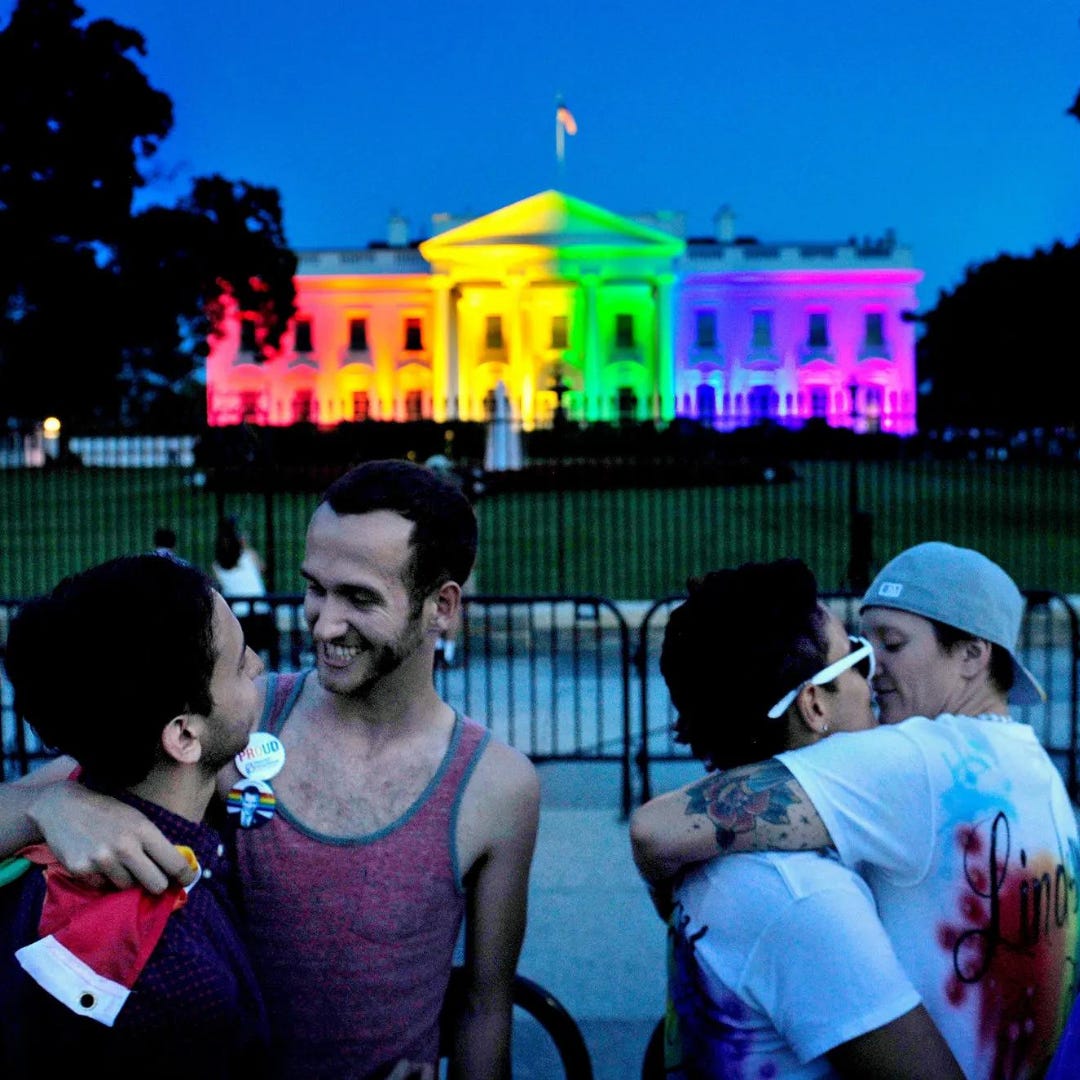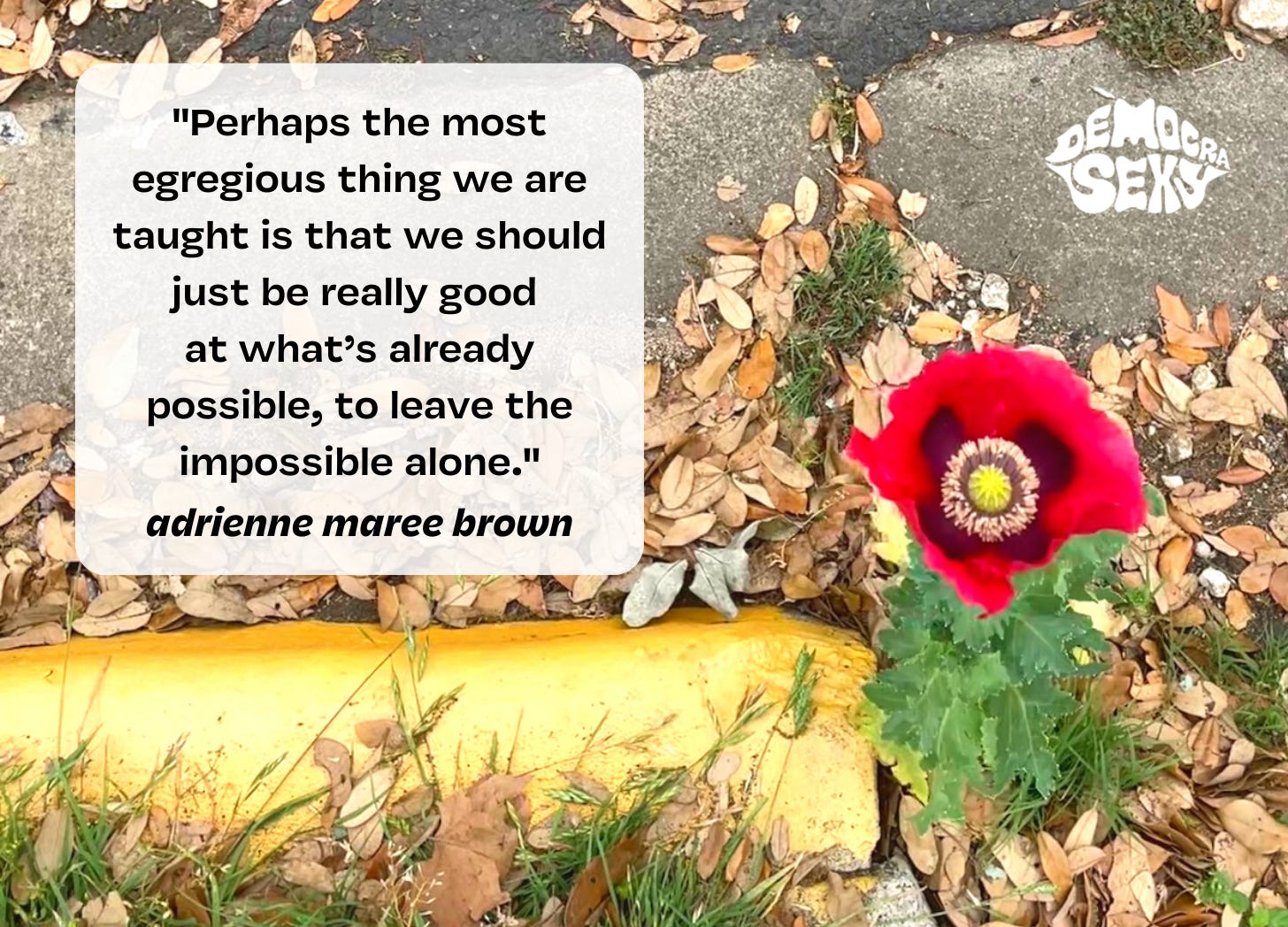Spring comes even to gutters.
I remind myself of this daily in Texas, which feels very much like a gutter at the moment.
I took this photo of a brilliant red poppy that had sprung up, impossibly, in a gutter one April morning as I walked my children to school.
I marveled at all the factors that came together for that little poppy seed to find its way into a crack between curb and road, nestle itself into a sparse speck of dirt, wait for a Texas rainstorm, and somehow not get too trampled by hundreds of tiny feet on their way to and from school.
What an imaginative little poppy seed! Where had it found the audacity?
Last Wednesday morning I walked my children to school past this same spot, scanning for blooms in the sidewalk cracks, searching the faces of the teachers and parents and kids for tired, tentative smiles in spite of the previous day’s shooting at a school 3 hours from this one.
At my second grader’s class party while the kids ate chocolate chip muffins and played freeze tag, the parents nestled deep into each other’s arms, our eyes wet. We looked at each other a long time. We didn’t say anything other than, “I know.”
“I know.”
Over the past week I’ve had many conversations with people in Texas who are finding it harder and harder to believe that seeds of change can sprout in soil that seems to become more inhospitable by the day.
Here’s how I’m tending hope.
The day of the Uvalde shooting was also primary runoff Election Day in Texas. I spent 15 hours as an election judge at my local polling place, working with public servants of both parties to help every voter who came through make their voice heard.
We aren’t allowed to use our phones in the polling place, so when there were no voters to serve I picked up a book: Emergent Strategy: Shaping Change, Changing Worlds, by adrienne maree brown.
brown articulates a theory of change-making that I know in my marrow is the only path forward that will leave no one behind.
Buy Emergent Strategy. Read it immediately.
By the end of the day my copy was dog-eared and underlined on nearly every page, but this sentence I’d surrounded in a cluster of exclamation points:
“Perhaps the most egregious thing we are taught is that we should just be really good at what’s already possible, to leave the impossible alone.”
Think of all the things that wouldn’t have happened if those who came before us had left the impossible alone!
This is Nance (pronounced “Nancy”) Legins-Costley, a fascinating and brave woman who began her fight to be freed from slavery when she was not yet 14 years old. Despite setback after setback over many years, she eventually was granted her freedom when Abraham Lincoln, then an Illinois state representative, argued and won her case before the state’s Supreme Court.
Historians credit Lincoln’s relationship with Nance as the thing that solidified his stance against slavery—he had previously been ambivalent.
Twenty-three years later, Nance’s son William Costley, who was an infant when Nance was freed, joined the Union army in the only Black regiment from Illinois.
On June 19, 1865, William and his regiment arrived with General Gordon Granger in Galveston, Texas, where they informed the 250,000 enslaved people of Texas that they were now free… 2.5 years after President Lincoln’s Emancipation Proclamation declared the end of slavery. It was the first Juneteenth.
What if Nance had decided not to bother with what surely must have seemed impossible at the time she was a teenager? What if she had just accepted her enslavement?
(I highly recommend reading this whole piece on Nance and William.)
This image is called Earthrise and it’s the first color photograph of the Earth taken by a human from space. It was snapped by astronaut William Anders from lunar orbit on December 24, 1968, during the Apollo 8 mission.
(NASA had figured out how to send humans to space but it couldn’t quickly process a color photo. When the Apollo 8 crew landed back on Earth, NASA technicians drove the film 4 hours from Houston to a Corpus Christi photo lab that was the first and only place in south Texas with color photo-developing equipment.)
Now Earthrise is known as “the most influential environmental photograph ever taken,” inspiring the first Earth Day in 1970.
What if humans had never bothered attempting the (still impossible-seeming!) feat of space travel? What if we had never seen ourselves so small and fragile as we do from space?
Carrying on the tradition of Octavia Butler, adrienne maree brown talks about how change-making is like science fiction—we must imagine something fantastic before we can take steps to create it.
In 1865 (the same exact year that William Costley traveled to Galveston and helped free the enslaved people of Texas) Jules Verne wrote the novel From the Earth to the Moon, in which he imagines the first moon landing.
Though it was a piece of fiction written 104 years before a human actually set foot on the surface of the moon, Verne’s novel got so many details right that he is considered the founding theorist of astronautics.
To get ourselves to the moon, we must first imagine ourselves on the moon.
We must let ourselves dream, even when our dreams make us look foolish or kooky or naive. Our very survival as a species depends on the outlandishness of our dreams in this moment.
I understand why people feel hopeless about solving gun violence in America, and in Texas specifically.
I understand why when Beto interrupts a press conference in the wake of a mass shooting some people default to cynicism, believing it to be merely a stunt for attention. For so long our leaders have done so little it’s become difficult to believe anyone might possibly act. To believe a politician’s motives could be pure.
Cynicism is often an act of self-preservation. I have great compassion for cynics, who I believe are simply latent optimists afraid of risking their hearts.
But as Ai-jen Poo and Tarana Burke said recently in a conversation for the On Being podcast, cynicism is the enemy of creativity. Tarana Burke, founder of the Me Too movement, was remembering back to before anyone had heard of her work, when she had little more than a notepad where she was writing down the names of celebrities she hoped would help her reach a bigger audience — Oprah, Gabrielle Union, Mary J. Blige. At the time the Me Too strategy was “like, 90 percent hope.”
Ai-jen responded:
“…there is something so powerful about the creativity of hope… it’s the base or the root of how we as organizers are able to be creative. If you are cynical and you are negative and you don’t believe that winning is possible, there’s no way to be creative. And the kind of creativity that’s required to address any of the problems that we’re dealing with, it’s just like, extraordinary.”
Extraordinary times call for extraordinary hope and creativity.

I moved to Texas from Los Angeles in late 2008, so the last time I voted in California was that November. On the same day we elected Obama as president, the people of California voted to ban same-sex marriage. In fact, the proponents of the ban had used a recording of Obama defining marriage as “the union between a man and a woman” on robocalls to California voters the night before the election.
My last California election was also the first time I ever attempted any form of political activism.
A couple of days before the 2008 election, I borrowed my non-profit office’s color printer to make a stack of flyers urging people to vote against the ban on same-sex marriage. Then I marched myself to several local gay bars and put them up.
Though I wouldn’t come out publicly for another 10 years, I am bisexual/pansexual and was horrified at the thought of supposedly liberal California voters turning their back on the queer community. I was shocked that so many patrons at the bars I was flyering didn’t know there was an election happening, or that gay marriage was on the ballot.
Even so, I was stunned and gutted when California voted to ban same-sex marriage. (And I had no idea what I was getting myself into by moving to Texas.)
I sobbed 6.5 years later when Obama’s White House lit up in the colors of the rainbow on June 26, 2015. Obama was very publicly celebrating that day’s Supreme Court decision in Obergefell v. Hodges, which struck down every state ban on same-sex marriage. That shift from impediment to ally happened in less than 7 years.
I refuse to leave the impossible alone.
In writing this piece, I looked up the literary significance of poppies and came across the most famous poem from WWI, “In Flanders Fields” by John McCrae. He was inspired to write it after seeing a cemetery thick with bright, red poppies. The soil had been churned up by artillery fire, awakening the dormant poppy seeds.
Because of that poem, poppies came to symbolize the blood spilled in the war and are used in remembrance of veterans.
But I choose to see the poppy as a symbol of awakening and renewal and resilience and beauty in the midst of violence and upheaval.
This little poppy seed blew in on a California breeze, but I plan to stay rooted right here in Texas. I might be clinging improbably to a shallow sliver of precarious dirt in a crumbling gutter, but I’m going to do it colorfully.
And if I leave? It’s going to be for the moon.
Join me.

Get updates on parties I throw, calls to action, voting guides and more when you join my email list at democrasexy.com
Follow me on Instagram for more regular content like explainer videos and “Tarot for America” readings.






